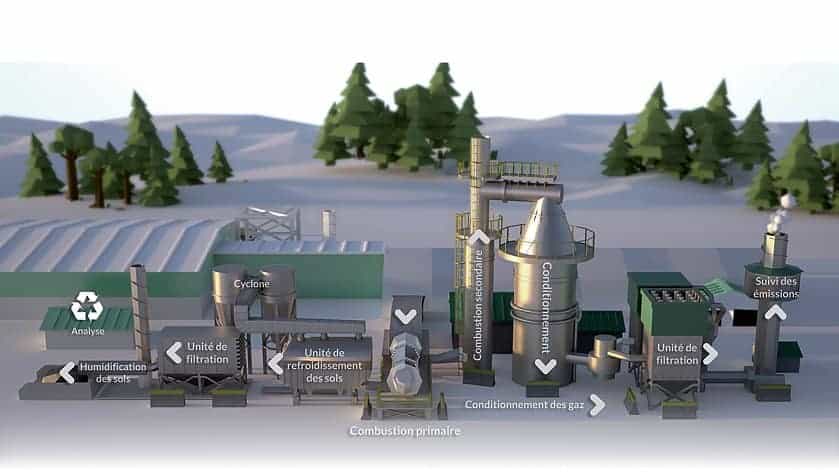Hazardous waste recycling for sustainable management
The thermal desorption technology used by RSI Environmental is a very effective hazardous waste treatment. RSI professionals takes care of the hazardous waste collection and treatment of materials to be recycled. By doing business with us, you can be assured that the hazardous materials will be safely disposed following all the hazardous waste regulations in Canada and United States.
All industrial activity has a potential impact on the environment. At RSI, we help industries meet both productivity and sustainability needs. Nowadays, industries and municipalities have made their decisions based on a sustainable perspective in order to become good corporate citizens.
By reducing waste and increasing recycling, RSI reaches its objective in finding a way to a sustainable future.
Hazardous waste disposal and recycling
At RSI, hazardous wastes, especially those coming from petrochemical industries, are mixed with contaminated soil for harvesting energy resulting from the combustion. Afterwards, this energy is re-used to supply our waste treatment plant. Our process is environmentally protective.
In this way, we were able to reduce greenhouse gas emissions (GHG) by 64 500 metric tons from 2013 to 2018. Industrial waste management and recycling is a good example of sustainability in industries.
Sustainability for industries
Our services focus on reducing waste disposal and promoting waste recycling instead, by recovering contaminated soil. We are always very careful to proceed to our task in a secure way. We also have the ability to respond to environmental emergencies, like in case of an oil spill or the release of any chemical waste in the environment.
RSI Environmental takes care of collection, transportation, disposal, treatment and recycling of hazardous waste for a wide range of industries.
